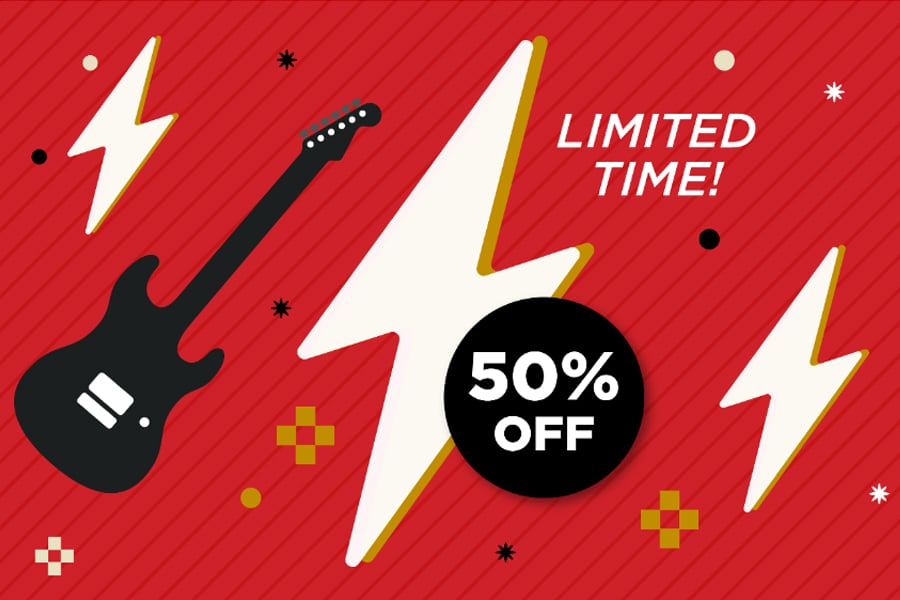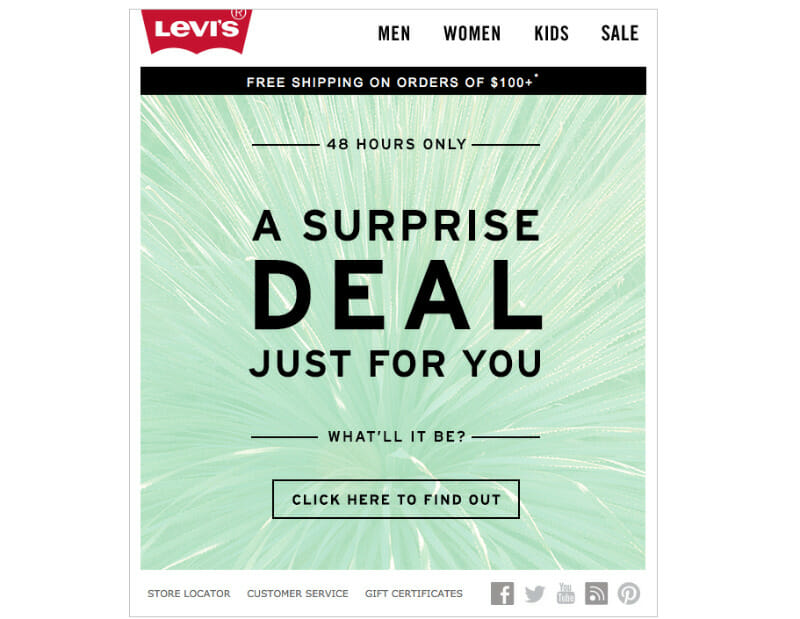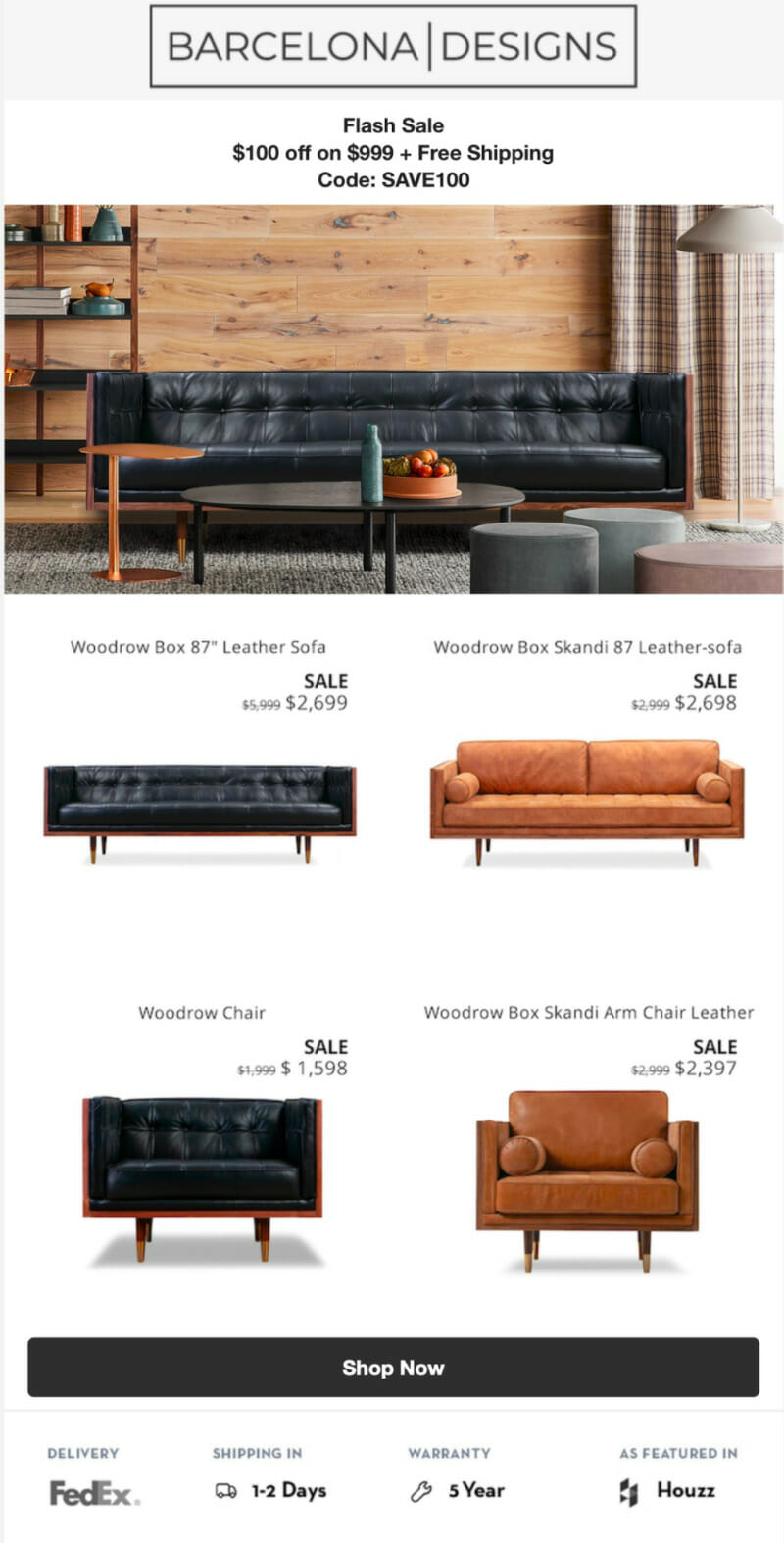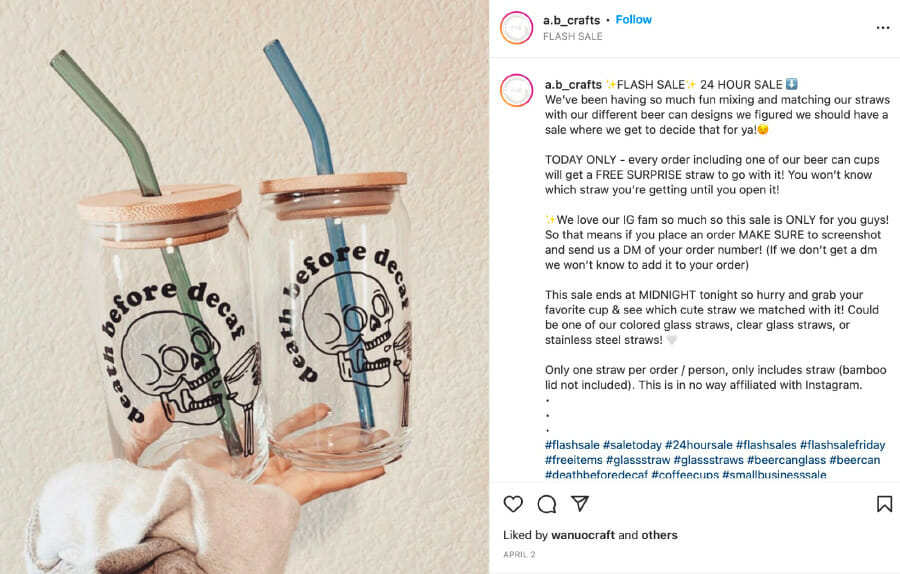Logistics
Industries
Technology & Innovations
E-commerce
E-commerce Fulfillment Services
Lease & Maintenance
Semi Trucks
Logistics
E-commerce
Lease & Maintenance
Buy Used Trucks

"24 hours only. Get it while it's hot!"
"ENDS SOON: 2 hours to go!"
"Last day for 40% off!”
If you've ever shopped online, there's a good chance that you have several of these emails sitting in your inbox: brands driving you to buy RIGHT NOW to take advantage of an amazing deal.
Flash sales are a well-used strategy within the e-commerce toolkit to generate sales and encourage impulse purchasing behavior. Yet flash sales are often poorly executed, resulting in high customer churn and a loss on sales due to aggressive discounting practices.
But running a flash sale doesn't have to mean a race to the bottom. With some careful audience research and goal-setting, you can hold a successful flash sale that boosts brand awareness - and your profits.
A flash sale or flash deal refers to a promotion where online stores sell products at a steep discount for a short period of time, usually no longer than 48 hours. The shorter a flash sale is, the more generous the discount will normally be.
The purpose of flash sales is to stimulate buyer urgency by offering an enticing deal that isn't available on a regular basis. Brands can use flash sales to get rid of excess inventory, increase customer acquisition, target disengaged customers, and boost short-term sales.
Flash sales differ from regular promotions in three key ways:
Duration. Flash sales run for a much more limited period than typical e-commerce promotions because they are designed to encourage impulse buying. Because time is short, online shoppers need to act quickly to take advantage of the deal and secure the items they're interested in.
Discount. Running a flash sale means requires deep discounts that your online store wouldn't usually offer as part of an ongoing sale. This is designed to attract online shoppers and create urgency to purchase while the deal is still valid.
Depth. Most flash sales will only cover a limited amount of inventory, rather than being store-wide. This is to ensure that a brand has adequate buffer stock levels, or because they're targeting a specific product that has either limited or excess stock.
Flash sales have gained widespread popularity as e-commerce grows more competitive. In the battle to stand out from the likes of Amazon and Walmart and their aggressively low prices, flash sales are a powerful tool to drive brand awareness and attract more customers to shop with you - and if you play your cards right, to turn them into loyal customers.
Consumers love getting a good deal that doesn't come up every day. This inspires favorable feelings towards your brand and primes shoppers to stay engaged with your marketing efforts, leading to better search volumes and stronger inroads to attracting competitors' customers.
In addition to being a sales strategy, flash sales also offer merchants a sophisticated inventory control strategy. Use flash sales to offload excess inventory at the end of the season and free up more space to restock better-performing items.
It's fair to say that flash sales don't always have the best reputation in e-commerce. Why? Because many merchants who run flash sales do so poorly and end up damaging their brand's reputation.
While it may be an extremely effective method for driving higher transaction rates, flash deals also cause you to lose customers if you don't create a customer-centered shopping experience.
Here are some common mistakes that hamper the success of flash sales:
Running a flash sale too often. If your business model heavily relies on flash sales, you run the risk of creating 'flash sale fatigue' where customers no longer feel the same urgency to make purchases. After all, if shoppers know that another flash sale will be on its way soon, why should they bother?
Attracting only one-time buyers. Many brands fall into the trap of targeting only first-time website visitors with their flash sales. This happens when merchants rely heavily on social media marketing and Google Ads to market their online sale, rather than their email list of existing customers. These price-conscious consumers are not loyal to your brand - meaning you're unlikely to see them again.
Not having enough inventory. Flash sales are great for creating demand - but you need to be able to fulfill it. Flash deal customers are going to experience a lot of frustration if items sell out instantly due to low inventory levels.
Poor customer service. Low prices are not a surrogate for positive customer experiences. No matter how many sales are going through your site each minute, shoppers still expect you to provide excellent customer service in the form of timely order processing and delivery. This is a must if customer satisfaction is to remain high.
Flash sales always run for a short period of time, but it's up to your brand to decide what's going to work best for your business model and products.
The shorter your flash sale is, the easier it is to create FOMO (Fear of Missing Out) in online shoppers. A study by Experian Marketing found that 3-hour flash sales had an email open rate that was 59% higher than average. But if your flash sale is too short, there won't be enough time for potential customers to see your email marketing or social media posts and complete their purchase.
In addition to the length of your flash deal, you also need to consider when is the right time to launch it. For example, starting a flash sale at 3 am when website traffic is down will result in low demand - not to mention unhappy customers who feel like they've been cheated out of a good deal.
Pro tip: Use Google Analytics to see what days/times of the week are the most active on your store and when your highest email open rates are.
The key to any successful flash sale is knowing what your objectives are, Flash sales can be used to accomplish several different goals, including:
While some of these goals may overlap with each other, you'll need to prioritize the target audience of your flash sale and how your product selection, timing, and marketing strategy will work together to achieve it.
The goal of your flash sale will play a role in determining which SKUs make the most sense to discount.
For example, if you're hosting a post-holiday season sale, you'll want to focus on clearing out seasonal stock which doesn't have much shelf life beyond the end of January. It's a good idea to discount this merchandise steeply to clear it, since the loss of profit margin will likely be less than the ongoing storage costs.
If you're wanting to draw attention to a new collection or product launch, a well-targeted flash sale can result to create the illusion of scarcity, therefore increasing demand for your product.
Running a successful flash sale is all about the discount that you're putting on the table. If consumers are going to sit up and take notice, you need to offer a promotion that makes it worth their while to interrupt their day and go shopping.
The question if 'how much' to discount depends on your target market. For example, your approach to targeting loyal customers versus new customers will require totally different strategies.
To win over first-time customers, it's a good idea to include high-margin products with either excess inventory or high inventory quantities that you can discount generously to make a good impression. Existing customers will be more discerning in looking for higher-value purchases, so consider supplying these customers with a discount code sent via flash sale emails to segment this offer away from direct visitors.
Choosing to offer free shipping alongside your flash sale is an easy way to get more shoppers to convert. It's worth noting that over half of consumers say they’ve abandoned carts due to ‘unexpected extra costs’ at the checkout. So, even if you're offering a really generous discount, you could end up losing sales if free shipping isn't offered.
If your flash deal is eroding your profit margin, offering free shipping on all orders placed within the duration could cause you to make a loss on some sales. Instead, you can choose to put a free shipping threshold in place to help your business reach a higher average order value. In fact, 58% of customers have added additional items to their cart to qualify for free shipping!
The whole point of flash sales is to generate more sales, so there's no point in launching one unless you know that your back-end operation is able to handle a sudden increase in demand.
To run a successful flash sale, your fulfillment center will need to be able to process a large number of orders in just a few hours without getting overwhelmed. This means you need to eliminate bottlenecks that could create delays.
For example, if the sync between your e-commerce platform and your WMS isn't real-time, your brand could end up selling more units than you have in stock. This is why it's critical to know how much inventory you have and whether certain items are a good fit for flash sales.
Once you've decided on what your flash sale is going to be, it's time to market it. If you haven't launched a flash sale before or do so very rarely, you want to give yourself a decent runway to drum up the excitement so that by the time your flash sale goes live, your customers are ready and eager to start shopping.
So, what does successful flash sale marketing look like?
Email marketing. Sending a flash sale email at regular intervals once your sale has begun is a great way to drive urgency. Flash sale emails see some of the highest open rates, thanks to consumers' eye for a good deal. Make sure to optimize your subject line with the details of your flash sale (duration and promotion) and provide
Onsite pop-ups. If your flash sale is available to any website visitor, consider using a pop-up to alert them of the promotion while it's still ongoing.
Social media. Your social channels are one of the best places to amplify discussions about your flash sale. Consider offering your followers an incentive in the form of a giveaway or other social discount in exchange for tagging friends in your posts.
Product pages. Flash product pages are a key promotional strategy in their own right because they are visible in Google search. Be sure to use exact keywords that reflect the features of your flash products.

Sephora is driving buyer urgency with this flash sale on Huda Beauty eyeshadows. Because the offer is only live for 4 hours, this encourages consumers to act fast and engage in impulse purchasing behavior to secure the flash product.

Outdoor brand Black Diamond uses a targeted approach in its flash sale by only discounting one specific product for a limited period. They've also introduced a limit of three units per customer to avoid inventory from running out too quickly.

Levi's has taken a novel approach with its 48-hour flash sale by marketing it as a 'surprise' offering that online shoppers must interact with to discover more details. By building up anticipation for their sale, Levi's can generate more engagement from their product pages.

The attraction of this flash sale by Barcelona Designs isn't just the discount, but the free shipping that comes with each online purchase. Given how expensive large items like furniture are to ship, this flash sale email campaign is especially effective at driving buyer interest.

Small businesses have the advantage of being able to put a fun twist on flash sales. A & B crafts have added an element of surprise to their flash sale by giving customers a free straw in a random color with every purchase of their cups.
Choosing to run a flash sale offers merchants a fair mix of risk and reward. While flash sales are a great way to increase sales and raise brand awareness across channels, they can also shape customer perception in the wrong ways. Developing a reputation as a discount retailer by over-using flash sales can be harmful to your brand in the long term, thanks to creating high levels of customer churn.
But by using flash sales sparingly and with a solid marketing strategy to build demand, they're a highly valuable tool to assist your brand in standing out from the crowd and building a base of loyal customers. By following the tips listed above, you can create a solid flash sale strategy that maximizes buyer urgency while controlling for cost and supply chain challenges.